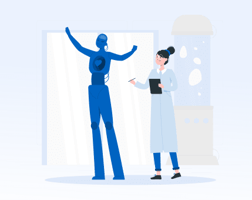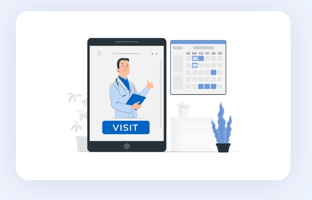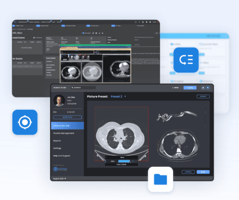The healthcare industry is undergoing a profound transformation, driven by technological...
Revolutionizing Healthcare: The Impact of Remote Patient Monitoring Software Development
Introduction
The healthcare sector is currently experiencing a paradigm shift, and at the heart of this transformation is the rapid development of remote patient monitoring (RPM) software. This article explores the exciting world of RPM software, delving into its profound influence on the healthcare landscape. We'll discuss its benefits, the challenges it faces, and the potential it holds for the future of patient care.
The Ascent of Remote Patient Monitoring Software
Remote patient monitoring software is swiftly becoming a cornerstone of modern healthcare. It empowers healthcare providers to remotely track and manage patients' health, offering an innovative approach to patient care. This technology is particularly crucial for individuals with chronic conditions, providing continuous, real-time monitoring and personalized healthcare.
Benefits of Remote Patient Monitoring
-
Elevated Patient Care: RPM software allows healthcare professionals to monitor patients' well-being around the clock, facilitating timely interventions and more effective care.
-
Empowered Patients: Patients can actively engage in their healthcare, closely monitoring their vital signs and symptoms. This leads to a more informed and proactive approach to their health.
-
Preventive Healthcare: Continuous monitoring enables the early detection of health issues, which can lead to timely interventions, reduced hospitalizations, and cost savings.
-
Cost Efficiency: By reducing the need for frequent in-person visits, RPM software can lead to substantial cost savings for both patients and healthcare systems.
-
Remote Care: Patients can receive quality care from the comfort of their homes, particularly vital in remote or underserved areas.
Challenges in Remote Patient Monitoring Software Development
While RPM software offers numerous advantages, it also faces certain challenges:
-
Data Security: Safeguarding sensitive patient data is paramount, and developers must implement robust security measures to protect against data breaches.
-
Interoperability: Ensuring seamless communication between different devices and software systems is crucial for the success of RPM software.
-
User-Friendly Design: RPM devices and software must be user-friendly, catering to a diverse patient population, including older adults who may not be tech-savvy.
-
Regulatory Compliance: Adhering to healthcare regulations and standards is a complex but essential aspect of RPM software development.
The Bright Future of Remote Patient Monitoring
The realm of remote patient monitoring software is continuously evolving, with various advancements shaping its promising future:
-
IoT Integration: The Internet of Things (IoT) facilitates the seamless connection of various medical devices and sensors, enhancing data collection and analysis.
-
Artificial Intelligence: AI-driven algorithms are becoming more sophisticated, offering predictive analytics and early detection of health issues.
-
Telemedicine Integration: Combining RPM software with telemedicine platforms enables real-time communication between patients and healthcare providers.
-
Wearable Technology: Wearable devices like smartwatches and fitness trackers are making remote patient monitoring more accessible and user-friendly.
-
Patient Engagement Tools: User-friendly patient portals enable patients to access their health data, monitor their progress, and communicate with healthcare providers.
Conclusion
Remote patient monitoring software development is revolutionizing healthcare. With benefits like elevated patient care, cost efficiency, and patient empowerment, RPM software is an integral part of modern healthcare. While challenges such as data security and interoperability persist, ongoing advancements in IoT, AI, and telemedicine integration promise a bright future for RPM. As technology continues to evolve, remote patient monitoring is set to become a driving force in improving the quality and accessibility of healthcare for patients around the world. It's an exciting time to witness the transformation of healthcare through remote patient monitoring software.


